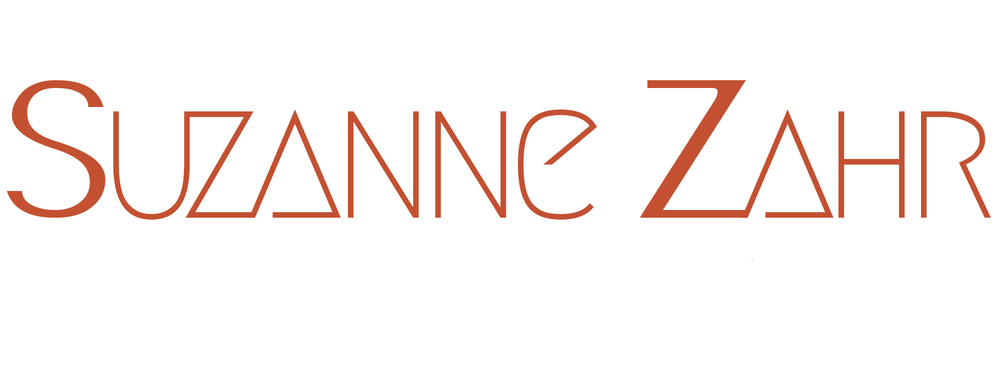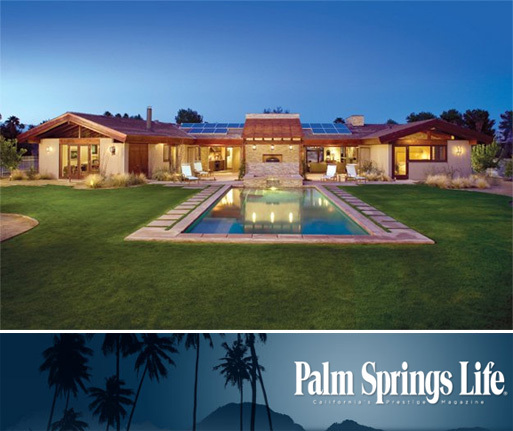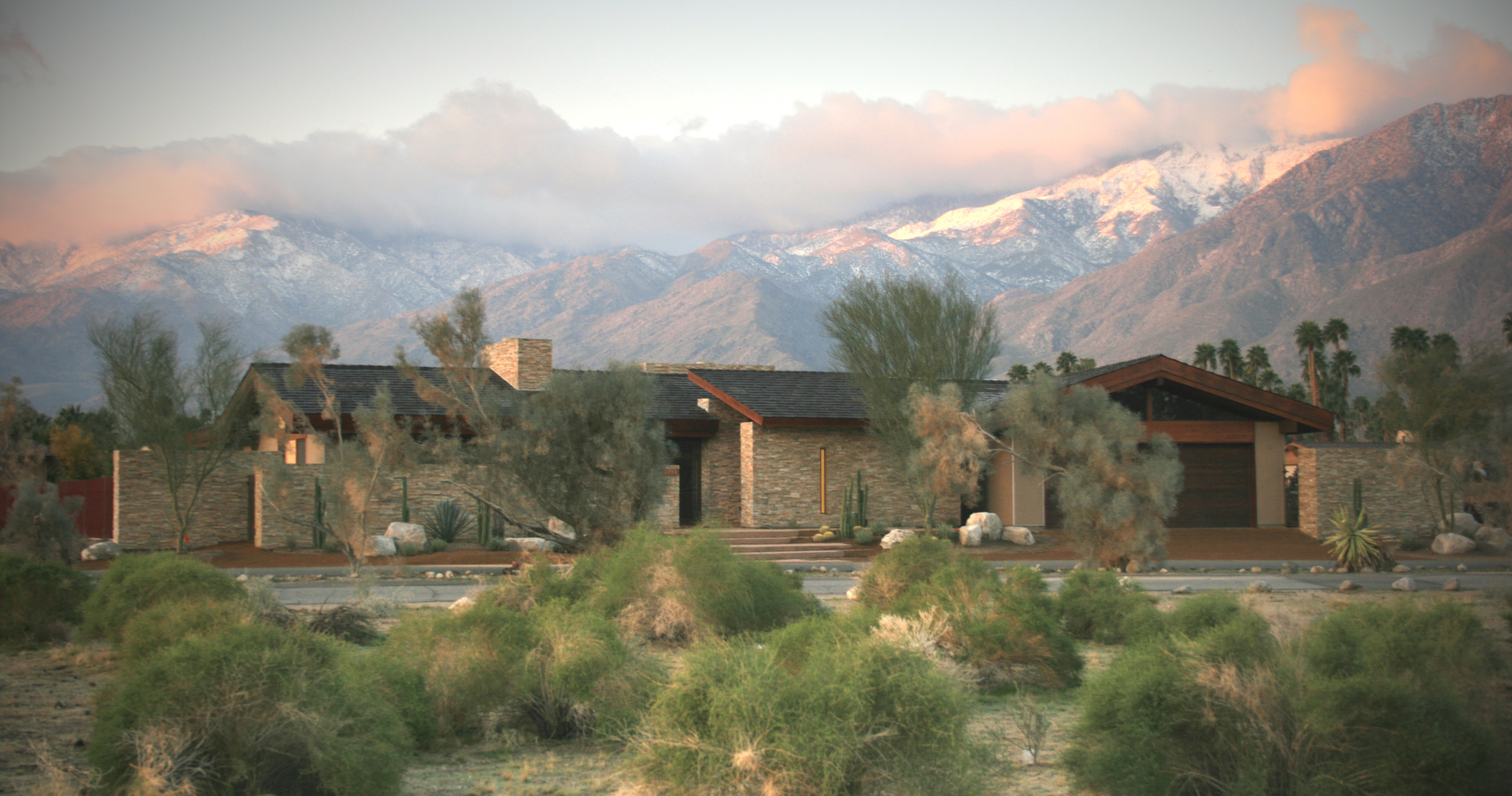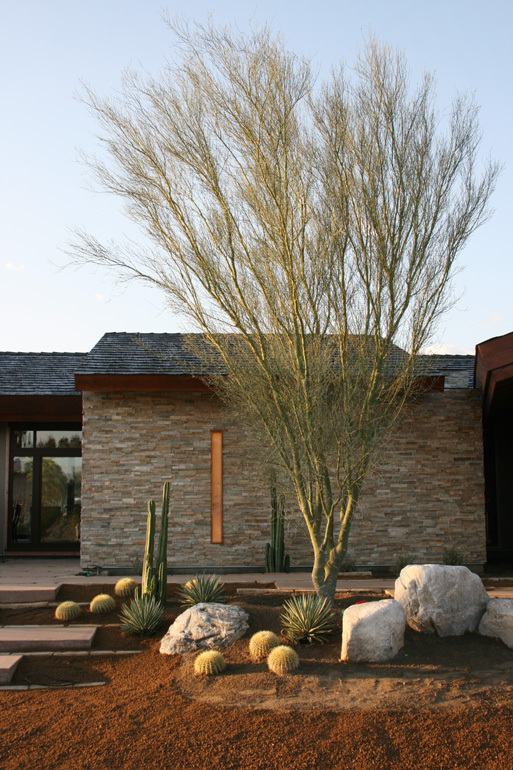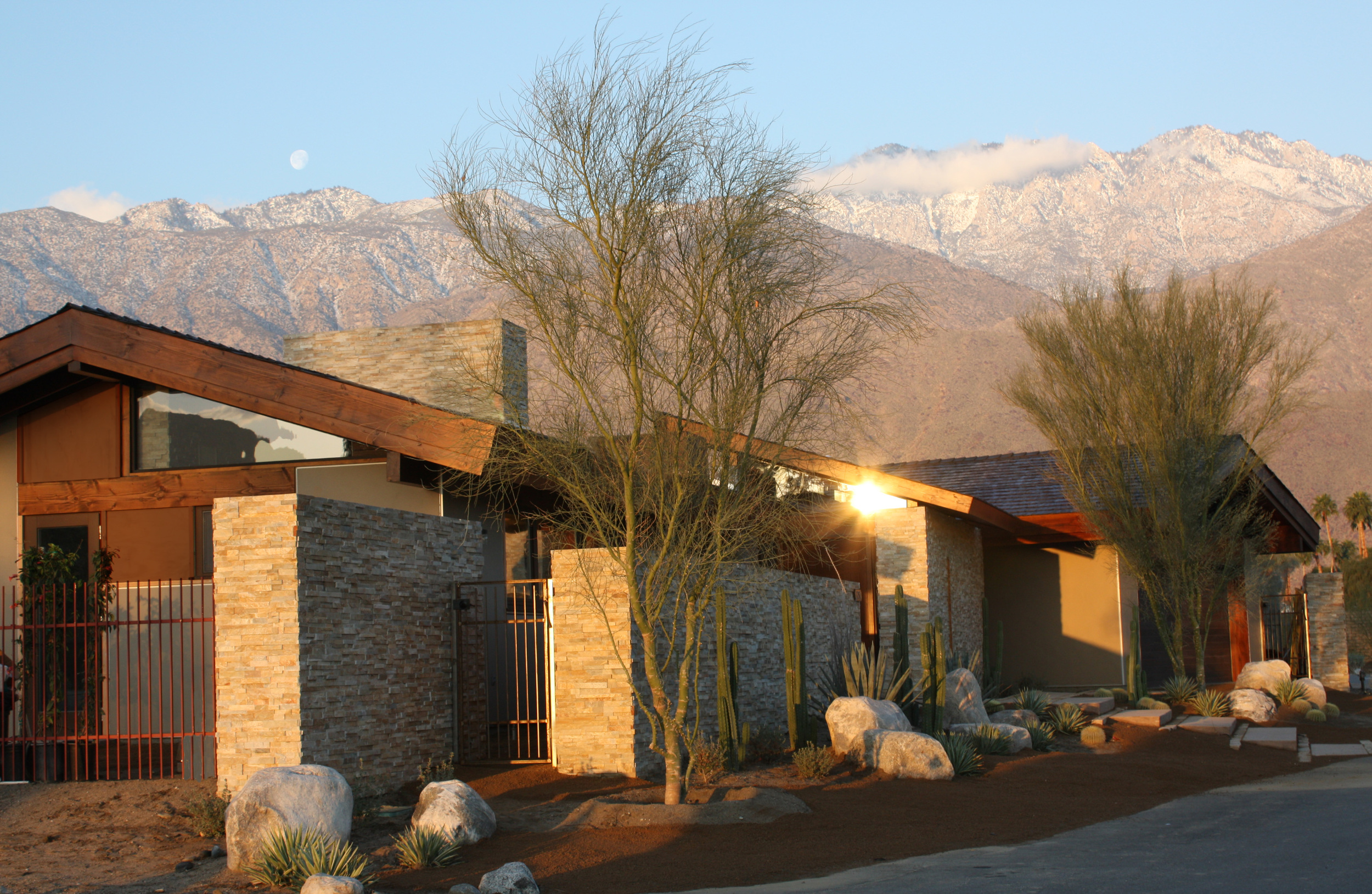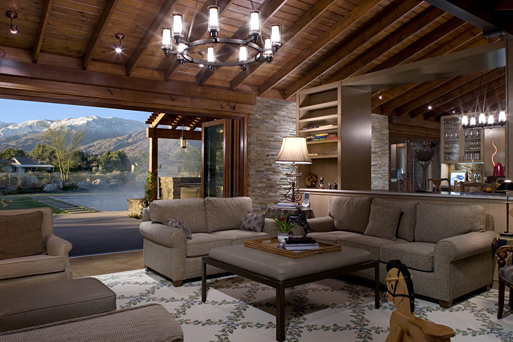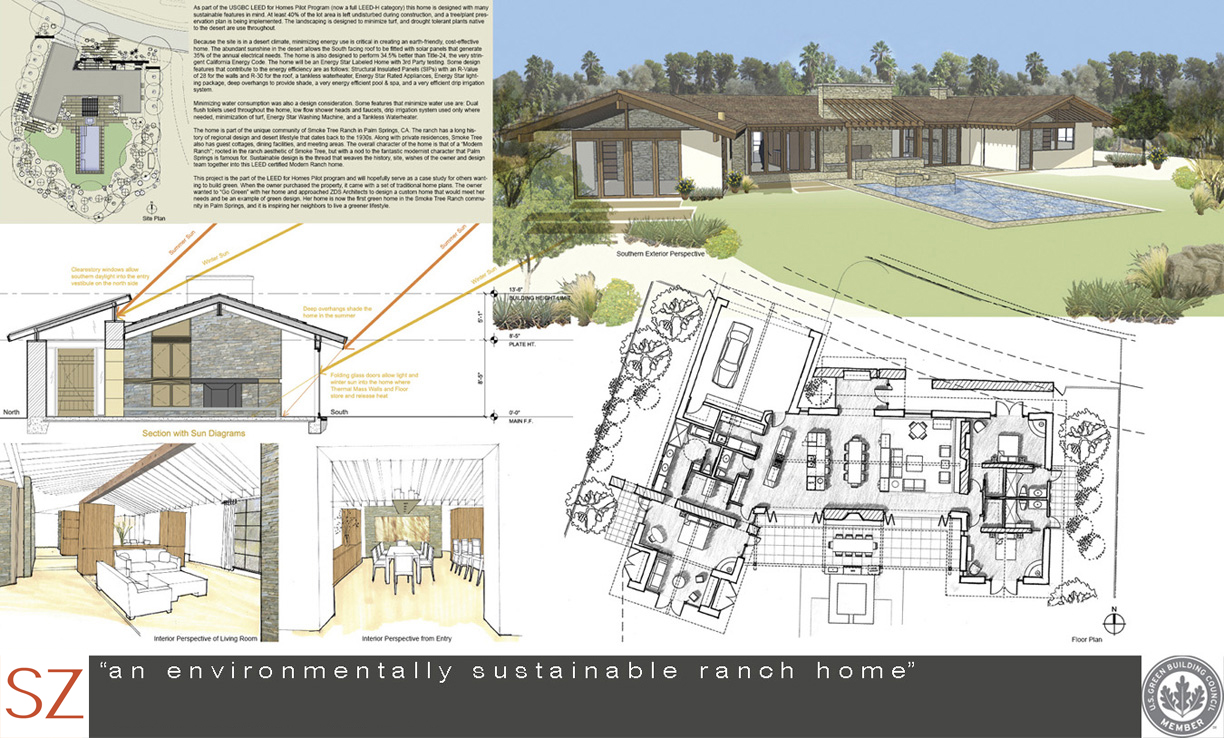SMOKE TREE RANCH
Palm Springs, CA
The most effective way to promote energy efficiency is to design a house that takes full advantage of natural light, passive solar energy, shading, cross-ventilation, and efficient space planning. Doing so — by studying sun angles, prevailing winds, and general site orientation — reduces the overall energy load required to live comfortably. Once these fundamental architectural moves are established, design and specification of artificial lighting and interior climate control enhance the overall efficiency.
SZ specified all cellulosic materials to ensure durability and to eliminate the threat of termites. Concrete masonry walls with stone veneer and concrete floors absorb heat when it’s warm and release it when it’s cold. Solar photovoltaic panels capture energy for the annual electrical load, yielding a net-zero energy house.
The roofing product, called eco-shake, is made of 100 percent recycled tires and visually draws a comparison to weathered cedar shakes.
The house participated in the LEED for Homes Pilot Program with the U.S. Green Building Council in 2006. The program requires third-party verification that ensures the design meets stringent standards. Although it’s a costly proposition, the savings in energy and resources typically returns the owner’s investment in five to seven years.
FEATURES:
• Indoor air quality: HEPA filters & sealing air ducts
• Energy-efficient lighting (using occupancy sensors)
• Nontoxic pest control
• Environmentally preferable products
• Site orientation
• Thermal mass walls and floors
• Saline pool and spa
• Kiva fireplaces
• Sustainable landscaping
PUBLICATIONS:
Palm Springs Life - Bionic Houses - Smoke Tree House
Seattle DJC - LEED residential program encourages healthy homes
CREDITS:
Interior Designer: Gary Henderson Interiors
